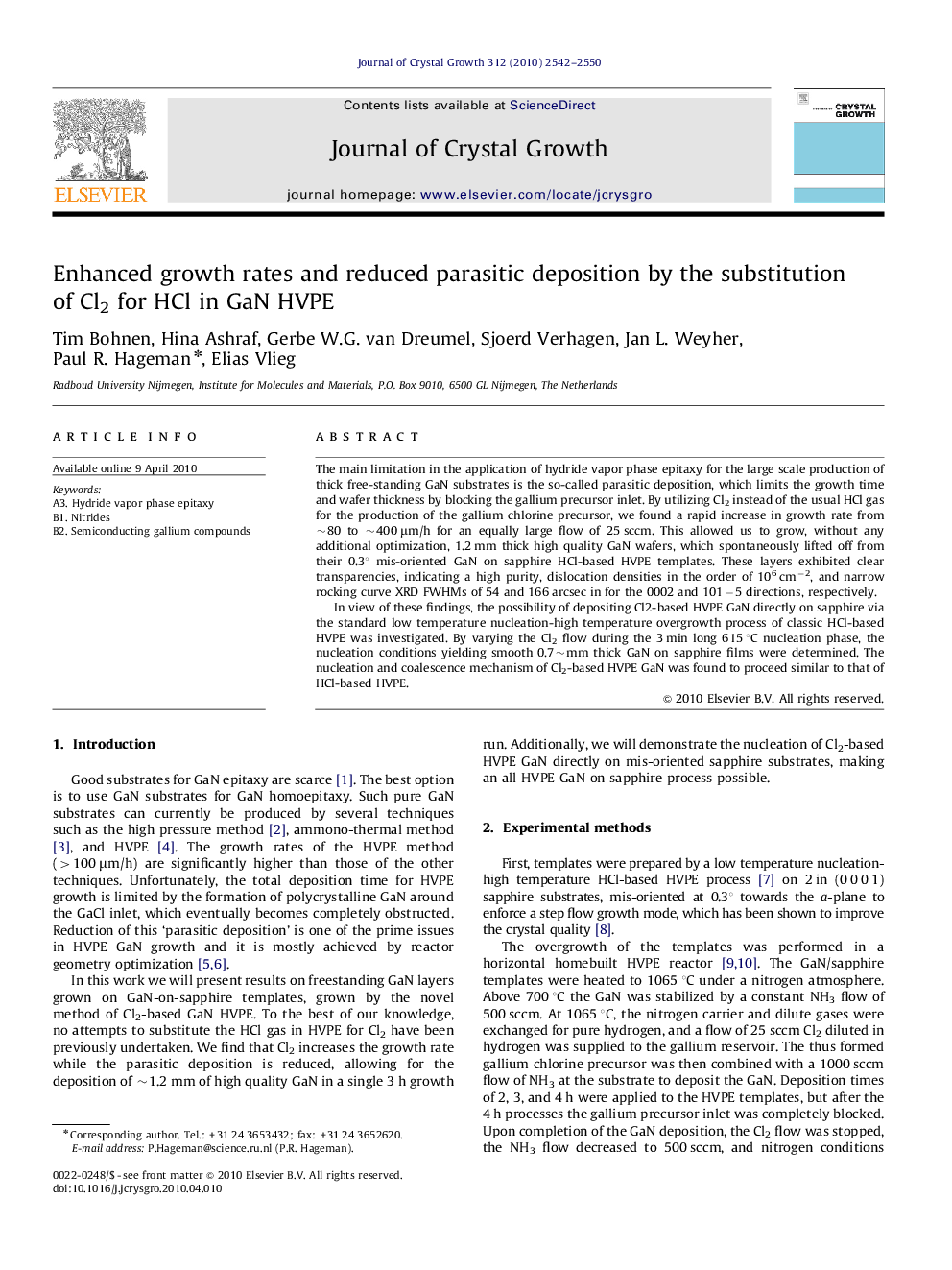| Article ID | Journal | Published Year | Pages | File Type |
|---|---|---|---|---|
| 1792685 | Journal of Crystal Growth | 2010 | 9 Pages |
The main limitation in the application of hydride vapor phase epitaxy for the large scale production of thick free-standing GaN substrates is the so-called parasitic deposition, which limits the growth time and wafer thickness by blocking the gallium precursor inlet. By utilizing Cl2 instead of the usual HCl gas for the production of the gallium chlorine precursor, we found a rapid increase in growth rate from ∼80 to ∼400 μm/h for an equally large flow of 25 sccm. This allowed us to grow, without any additional optimization, 1.2 mm thick high quality GaN wafers, which spontaneously lifted off from their 0.3° mis-oriented GaN on sapphire HCl-based HVPE templates. These layers exhibited clear transparencies, indicating a high purity, dislocation densities in the order of 106 cm−2, and narrow rocking curve XRD FWHMs of 54 and 166 arcsec in for the 0002 and 101−5 directions, respectively.In view of these findings, the possibility of depositing Cl2-based HVPE GaN directly on sapphire via the standard low temperature nucleation-high temperature overgrowth process of classic HCl-based HVPE was investigated. By varying the Cl2 flow during the 3 min long 615 °C nucleation phase, the nucleation conditions yielding smooth 0.7∼mm thick GaN on sapphire films were determined. The nucleation and coalescence mechanism of Cl2-based HVPE GaN was found to proceed similar to that of HCl-based HVPE.
